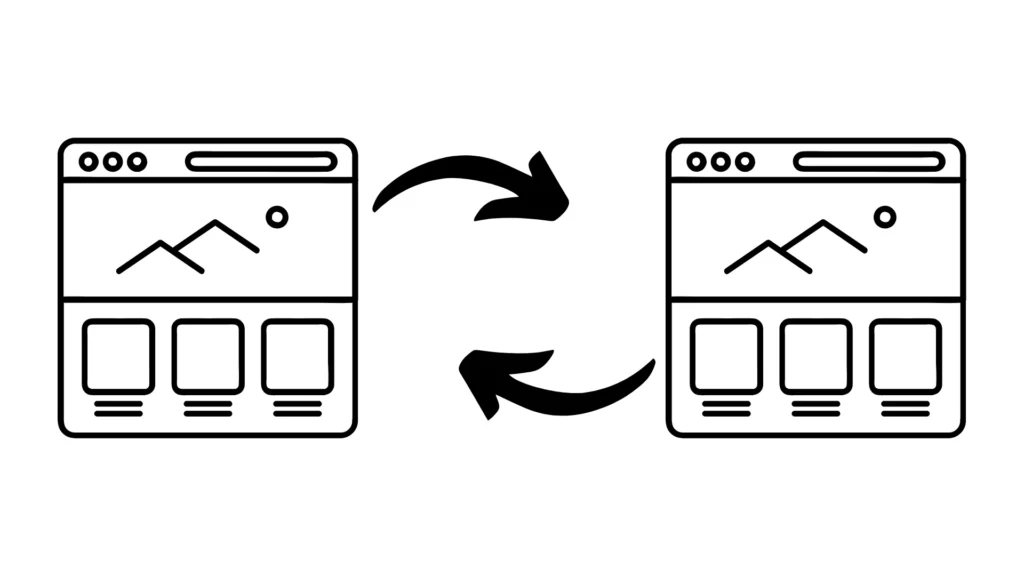
The Quest for Google’s Top Spot
You can write the best blog in your niche, pour hours into crafting each post, and still get buried on page three of Google, especially without a solid blog strategy behind it.
And let’s be real — who even goes to page three?
Ranking #1 on Google isn’t just a vanity metric. It’s the difference between crickets and a flood of traffic. According to Backlinko, the top result in Google’s organic search gets a whopping 27.6% of all clicks. By position #2, that number drops to 15.8%, and it only gets worse from there.
So, if you’re asking, “How do I drive traffic to my blog?” or “How can I get more traffic to my blog?”, you’re in the right place.
This isn’t about gaming the system. It’s about smart blog strategy — understanding what Google wants and delivering it better than your competitors.
Here’s what you’ll learn:
Key Takeaways
- How to identify high-impact keywords and align them with user intent
- Techniques for formatting and optimizing blog content for SEO
- On-page SEO tactics to speed up your site and improve user experience
- Smart backlink strategies that actually work (no spammy tactics)
- How to use analytics and tools to fine-tune your traffic growth
Let’s dive into the strategies that separate the top 1% of bloggers from everyone else.
Mastering Keyword Research

Keyword research is like digging for gold — you need the right tools, a good map, and a bit of patience. Without it, you’re just guessing.
Ranking high on Google starts with understanding what your audience is searching for — not just the words, but the reasons behind those words.
Understanding Search Intent
Search intent is the “why” behind a query. Is the user looking to buy something (transactional)? Learn something (informational)? Or go somewhere specific (navigational)?
Let’s say someone searches “how to bring more traffic to my blog.” That’s clearly informational. They’re looking for guidance, not a product pitch.
Now compare that to “best SEO tool for bloggers.” That’s leaning transactional — they’re ready to make a decision.
Google’s algorithm is smart enough to pick up on this, and if your content doesn’t match the user’s intent, you won’t rank.
WordStream dives deep into this, showing how intent-based optimization can boost relevance — and ultimately, your rankings.
So before you even write a headline, figure out the intent behind your keyword.
Utilizing Keyword Research Tools
The internet’s not short on keyword tools. But the best bloggers don’t just rely on one.
Start with Google Keyword Planner to see search volume and competition. Then layer in SEMrush or Ahrefs to spy on what your competitors are ranking for.
Look for high-volume, low-competition keywords — those are your sweet spot. Reddit threads and forums can be goldmines for real-world phrases your audience actually uses.
And don’t ignore long-tail keywords. “How can I drive traffic to my blog” might not have a huge search volume, but it’s highly specific — and that means higher conversion potential.
The key? Stack your tools, filter by intent, and test what works. That’s how you build a blog strategy that actually ranks.
Crafting SEO-Optimized Content

It’s not enough to stuff keywords into a post and hope for the best. Your content needs to be structured in a way that search engines — and more importantly, people — love.
Structuring Content for Readability
Think about how you scroll through a blog post. Long walls of text? Instant back button.
Break your content into digestible chunks. Use headings, bullet points, and short paragraphs. This isn’t just about readability — it helps Google crawl and index your content more efficiently.
A strong title tag grabs attention, while a clear meta description tells users what to expect and boosts your click-through rate.
WIRED-style formatting, where each section flows naturally and visually engages the reader, keeps people on your page longer — which signals to Google that your content is worth ranking.
Incorporating Keywords Naturally
Keyword stuffing? That’s so 2010. Not only does it make your writing sound robotic, it can actually get you penalized.
Instead, sprinkle keywords throughout your content — in your intro, subheadings, image alt text, and URL slug.
Here’s an example: If your keyword is “boost blog traffic,” a natural sentence might be: “One of the fastest ways to boost blog traffic is by improving your site speed.”
See? Flows like a conversation.
Also, use LSI keywords (related phrases) to provide context. Search engines love it when you expand on a topic without repeating the same phrase like a broken record.
So write for people first — and Google will follow.
Enhancing On-Page SEO

Once your content is optimized, you need to make sure your site’s technical setup isn’t dragging it down. On-page SEO ties everything together.
Optimizing Images and Alt Text
Images do more than decorate — they help your content get discovered.
Make sure every image has a descriptive filename and alt text. Instead of “IMG1234.jpg,” try “blog-traffic-strategy-chart.jpg.”
Your alt text should describe the image in a way that’s helpful to both users and search engines. This boosts accessibility and adds more relevant keywords to your page.
Think of it this way: Google can’t see images, but it can read descriptions. A well-labeled image can show up in image searches and bring in additional traffic.
Improving Page Load Speed
If your site takes more than three seconds to load, nearly half your visitors might bounce. That’s a lot of lost traffic.
Use Google PageSpeed Insights to identify bottlenecks. It’ll tell you what’s slowing things down — whether it’s oversized images, too many plugins, or bad code.
Simple fixes? Compress your images, use browser caching, and consider a content delivery network (CDN) to speed things up globally.
Backlinko found that faster pages not only retain more visitors, they tend to rank higher too. Speed matters — not just for SEO, but for keeping readers around.
Building Quality Backlinks

Backlinks are like upvotes for your content. The more high-quality sites link to you, the more credible your blog appears in Google’s eyes.
Guest Posting and Outreach
Guest posting isn’t dead — it just needs to be done right. Look for websites in your niche that already have domain authority and engaged audiences.
When you pitch, don’t just ask for a backlink. Offer something valuable. A fresh perspective, original data, or a case study works wonders.
Here’s a basic outreach email template:
Hi [Name],
I’ve been reading [Site Name] and really enjoyed your article on [Topic]. I recently wrote a post that complements it well — would love to share it with your readers. Would you be open to a guest post on a related topic?
Best, [Your Name]
Customize it, of course — generic pitches go straight to trash.
Leveraging Internal Linking
Not every link needs to go out. Internal links — those pointing to other posts on your site — help with navigation, SEO, and session time.
Link to older, relevant articles when you publish new content. Use clear anchor text (no “click here” stuff).
It’s not just good for SEO — it helps readers dive deeper into your blog.
Wikipedia nails internal linking. Their pages are webbed together in a way that keeps you clicking for hours. Aim for that level of seamless integration.
Utilizing SEO Tools and Analytics

Creating great content is one thing — knowing how it performs is another. If you’re not measuring what works, you’re guessing.
Monitoring Performance with Google Analytics
Google Analytics is your blogging control panel. It tells you where your traffic is coming from, what posts are keeping people around, and where they’re bouncing off.
Check metrics like average session duration, bounce rate, and pages per session. These offer a window into your readers’ behavior.
Got a post with high traffic but a short session time? It may need more engaging content or better internal links. Low traffic but high time on page? Promote it more — it’s working.
Pinterest and WordStream emphasize the value of tweaking content based on these insights. This isn’t just numbers — it’s direction.
Using Google Search Console
If Analytics is your control panel, Search Console is your health check.
It shows which queries bring you traffic, how your pages rank, and whether Google is indexing your content properly. You can also identify crawl errors that might be hurting your visibility.
Submitting your sitemap and checking the coverage report regularly ensures your content is discoverable.
It’s like a feedback loop: publish content, monitor it, optimize based on data, repeat. Wikipedia even uses this cycle to maintain authority across millions of pages.
Don’t let good content collect dust. Use these tools to shine a spotlight on what works — and course-correct what doesn’t.
Achieving and Maintaining Top Rankings
So you’ve done the hard work — your blog is optimized, loaded with great content, and backed by smart strategies. Now what?
This is where consistency wins.
SEO isn’t one-and-done. Google updates its algorithm frequently (thousands of times per year), and user expectations keep shifting. That’s why the most successful bloggers don’t just rank once — they keep evolving.
Revisit your top posts every few months. Are the stats still accurate? Are competitors doing something fresher or more in-depth? Refreshing content is one of the easiest ways to maintain rankings.
Also, keep experimenting. What worked six months ago might not work next quarter. Track your results, adapt your tactics, and always look for the next opportunity to deliver more value.
Backlinko and WIRED both emphasize the same truth: long-term SEO success is a mix of patience, persistence, and iteration.
Here’s your challenge — pick one tactic from this post, apply it this week, and measure the impact. Then try another.
Because ranking #1 isn’t magic. It’s momentum.
Quick FAQs on Blog SEO
Q: How long does it take to rank #1 on Google?
A: It depends on your niche, competition, and the quality of your SEO. On average, it can take 3–6 months for well-optimized content to break into the top spots.
Q: Should I update old blog posts?
A: Absolutely. Updating old posts with fresh data, improved formatting, and internal links can quickly boost rankings and traffic.
Q: Is it worth using paid SEO tools?
A: If blogging is your business, tools like Ahrefs and SEMrush are worth it. They offer deeper insights, competitor data, and keyword suggestions you can’t get for free.
Q: Do backlinks from social media count?
A: Social media links aren’t traditional “backlinks,” but they help drive traffic and visibility, which can lead to real backlinks down the road.
Q: Can I rank without backlinks?
A: It’s possible in low-competition niches with great content and smart keyword targeting, but in most cases, backlinks are still a major factor.




A WordPress Commenter May 29, 2025
Hi, this is a comment.
To get started with moderating, editing, and deleting comments, please visit the Comments screen in the dashboard.
Commenter avatars come from Gravatar.